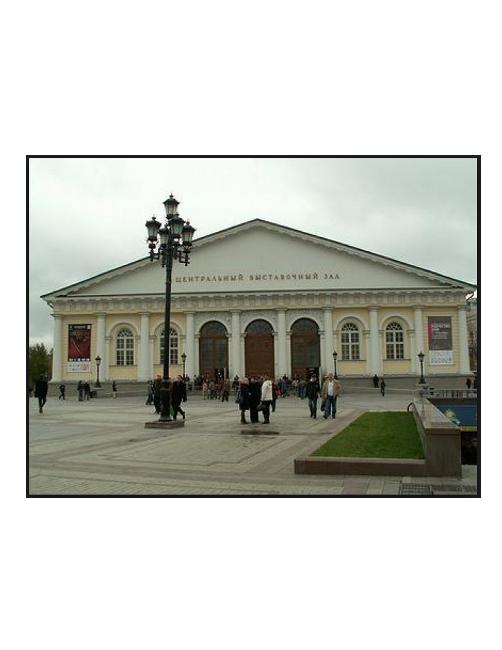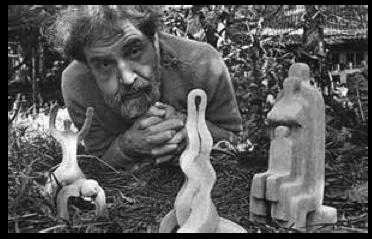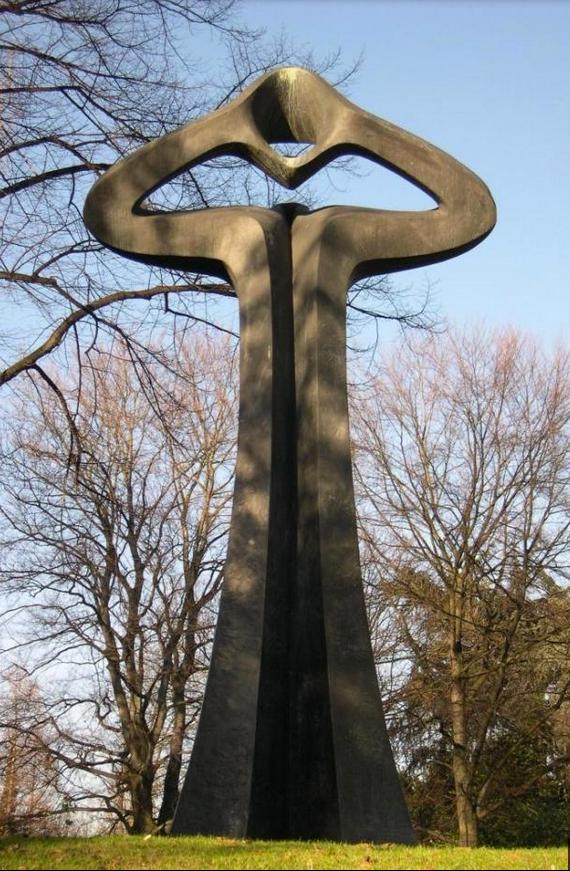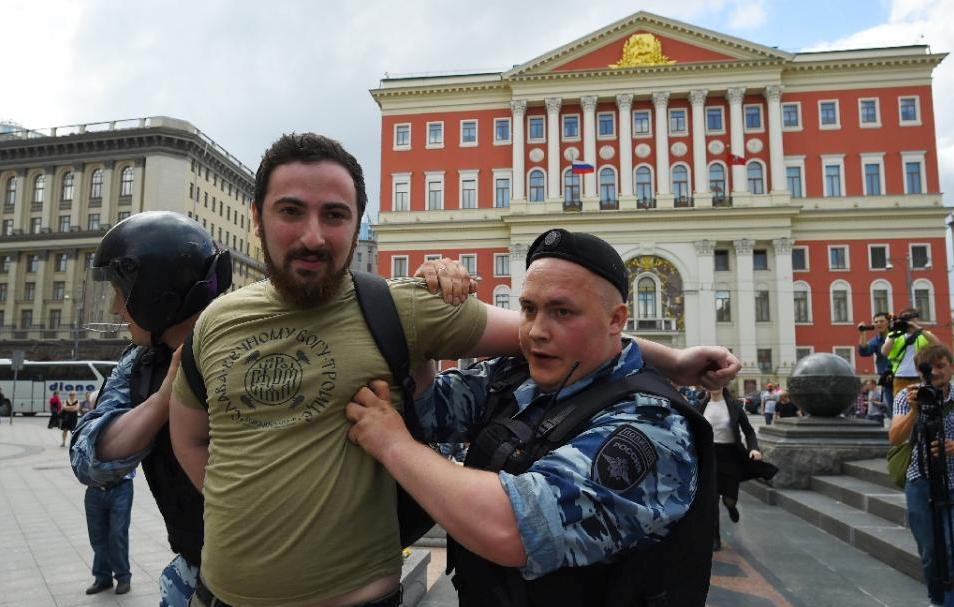A group exhibition of legendary Moscow sculptors, members of the artistic association LeSS (1954-1968, opened on August 14 in the Manege Central Exhibition Hall, one of the largest exhibition halls of Moscow . It is located next to the Kremlin
According to the Manege’s web site, the exhibition, named “Sculptures, which we do not see”, is a full-scale study of the phenomenon of “basement nonconformism”, a movement that existed in the late era of the Soviet Union in parallel to the official art.
In 1954, young Moscow sculptors Vladimir Lemport, Vadim Siddur and Nikolai Sīlis established the art association LeSS. Joint activities of the group continued until 1968. The sculptors often were fulfilling government commissions: many Soviet building are decorated with their bas-reliefs. At the same time they had been creating nonconformist works, which had remained in their basement workshops.
As Gorbachev’s “Perestroika” started, the popular Russian Literary Gazette published an article on April 29, 1987 by the famous physicist Vitaly Ginzburg entitled “Sculptures, which we do not see”. Ginsburg, a member of the Science Academy and Nobel laureate, urged efforts to preserve the creative legacy of Vadim Siddur. As the result of this article the Museum of Vadim Siddur was created in Moscow.
The title of this famous article was used as the title of the current exhibition at the Manege.
Vadim Siddur today is a recognized classic of Soviet art. His sculptures can be found in the squares and museums of many countries.
Soon after the opening of the exhibition “Sculptures, which we do not see”, a prominent Russian Orthodox Church activist, Dmitry Tsorionov, known by the nickname Enteo, appeared in the exhibition hall, along with a group of his aggressive supporters, and addressed the visitors of the exhibition with a speech.
Enteo had said that the exhibition included an “indecent” depiction of Jesus Christ without a loincloth and so was a “dirty, harsh mockery of Jesus Christ and the saints.”
Then Enteo’s friends started throwing sculptures to the floor. Several of Siddur’s works were completely smashed. Visitors of the exhibition protested. Exhibition’s guards not even moved. Probably they were not sure about illegality of the actions of the “believers”, who clamed, that they act in accordance with the new Russian law, defending believers’ feelings.
Finally police came and arrested Enteo and his comrades.
Police brought the Orthodox activists into a precinct. At night Enteo wrote in his blog: “Thank God, everyone of us is released. The terrible sacrilege is defeated. I hope the exhibition will be closed, the perpetrators will be removed from their posts.”
Enteo, the head of the nationalist ‘God’s Will’ group is a prominent conservative activist. He claims to defend Orthodox values while picketing and heckling at arts events and liberal protests. This year he attempted to stop a gay-pride rally in Moscow. His bullying until now always remained unpunished.
In recent years, religious fundamentalist activists have targeted a number of exhibitions in Moscow and forced them to shut down, while organizers have been fined for inciting hatred.
But this time the case is different as “believers” attacked not the works of contemporary “decadent west influenced” artists, but the sculptures of recognized classic of Russian art, which belonged to a State museum.
The event became a major subject of discussions in the Russian media.
Many Russian web sites quoted the twitter comment of known liberal journalist Vladimir Varfolomeyev: “Now Orthodox warriors are smashing a sculpture exhibition in the center of Moscow. Hail the Russian Islamic State!”
An artist Alexei Knedlyakovsky, whose installation was damaged by Enteo last year, wrote in a tweet: “Maybe after this Enteo will finally get jailed?”
Mikhail Fedotov, Head of the Presidential Council on Human Rights, said to Interfax Agency that in his opinion this mayhem is a case for criminal prosecution. “These actions have the offense. And we are not talking about one, but of several articles of Criminal Code. One should not act like barbarians from Islamic State, “. said Fedotov. He added: “I am confident that our investigative bodies will give adequate legal assessment of the acts committed. No one is allowed to destroy cultural values. It is a criminal offense”.
The head of the Synodal Department for Church and Society Relations Archpriest Vsevolod Chaplin, in connection with the incident has called for compliance with the law for both the organizers of such events, and those who call themselves ‘Orthodox activists’. “One must obey the law. If Mr. Tsorionov broke the law, let him answer to the fullest extent. At the same time the law calls and also should be acted upon against desecration of venerated objects and symbols of believers, one of which is a crucifix”.
Ironically The Manege Exhibition Center is widely known as the scene of one of the most famous Soviet-era crackdowns on contemporary art. In 1962, then Soviet leader Nikita Khrushchev visited an exhibition of modern paintings at the hall and angrily denounced the artists as “fags” and “bastards.” He actually spat on an abstract painting, which especially disgusted him.
Many Russians see the new mayhem in the same Manege as a symbolic event, leading to the return of lack of freedom similar to the Soviet time.





